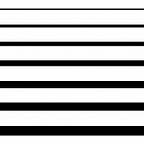Assorted facts about the Maya Civilisation
I’ve been lucky enough to visit some Maya ruins recently, in Guatemala and Mexico. To celebrate, here’s a short post listing some surprising (to me) facts/claims about the Maya, mostly from the excellent Wikipedia page.
- It’s a clichéd style of fact but I still can’t get my head around this: we’re closer in time to the end of the Maya civilization than the end is to the start, however you slice it.
We still know so little about the Maya:
2. Most major Maya cities are still largely unexcavated (85% of Tikal, 90% of Palenque).
3. In 2017, archaeologists discovered another 60,000 Maya structures buried in the jungle of Guatemala by using LiDAR technology (Light Detection And Ranging, targeting an object with a laser and measuring the time for the reflected light to return to the receiver). This caused some researchers to update their estimates of the population of the area from 5 million to 10–15 million (bigger than New York or London).
4. A Preclassic Maya ruin was discovered in 2020 which contained one of the oldest and largest Maya ceremonial sites ever discovered, built around 1000 BC to 800 BC.
5. The Maya were keen astronomers — they managed to measure the 584-day Venus cycle with an error of just two hours.
6. I had thought that ancient peoples like the Maya would live in harmony with the nature around them and treasure it. False! In major city centres, the Maya paved over the jungle entirely with concrete.
7. The Maya are thought to have the most sophisticated and highly developed writing system of more than a dozen systems that developed in Mesoamerica. However, almost all of what they wrote on paper (not stone, thankfully) was destroyed by The Catholic Church and colonial officials. Only three undisputed Maya codices remain.
“[O]ur knowledge of ancient Maya thought must represent only a tiny fraction of the whole picture, for of the thousands of books in which the full extent of their learning and ritual was recorded, only four have survived to modern times (as though all that posterity knew of ourselves were to be based upon three prayer books and ‘Pilgrim’s Progress’).
— Michael D. Coe, The Maya, London: Thames and Hudson, 6th ed., 1999, pp. 199–200.
8. One Catholic bishop, Diego de Landa, was responsible for the majority of the burning of the codices. At the same time, he was also one of the most valuable Maya scholars.
“99% of what we today know of the Mayas, we know as the result either of what Landa has told us in the pages that follow, or have learned in the use and study of what he told.”
— William Gates, Yucatan Before and After the Conquest.
9. The Maya used a base 20 (vigesimal) system to count. They had symbols for the numbers 1–20, as opposed to our 1–10 (the decimal system). This made their calendars pretty neat and interesting.
This also makes it clear that the 2012 end of the world myth was total bullshit. 2012 marked the end of 14 bak’tuns from 3114 BC (when they started counting). The Maya certainly thought this would be a big deal, even bigger than the turn of the millennium, but not the apocalypse. They quite evidently expected to measure far longer time periods.
